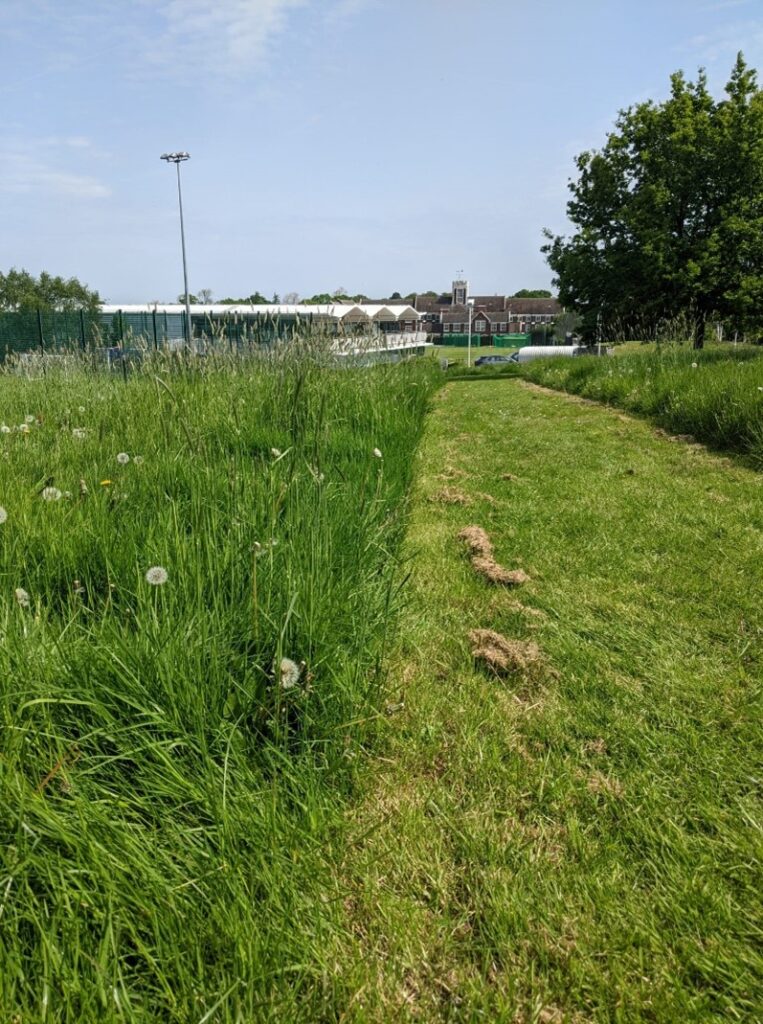Biodiversity: Is Not Mowing Worth it?
Guest blog by Rich-Fenn-Griffin, Loughborough University’s Assistant Gardens Manager.
I expect many of you were probably worried that the gardeners had gone on strike when the grass started to grow long on campus in April. In fact, we had some comments along the line of ‘did the gardeners only get halfway through the job and give up?’ Our intentions were always purposeful, and I hope you can appreciate that the plan is now delivering a more beautiful and interesting green spaces.
So what are the benefits of having longer grass?


Let’s look at some photos to appreciate the differences between mowing and managed mowing (the areas with long grass). In the photo (below left) you can see an area completely cut. The greenness of the grass is lost under the brown of the recently cut grass drying on top. This cut grass will eventually rot down but in the process creates a layer that suffocates any wildflowers growing in the lawn. This makes the lawn more grassy and less florally rich in the long run. It also means the grass sequesters less carbon dioxide and so doesn’t help tackle global warming like longer grass. If you contrast this with the photo on the right (below), you can see long grass has more structure and niche habitats. The grass and flowers don’t all grow at the same rate and this creates opportunities for different insects to feed and live in the area. For instance, spiders will set up webs between the longer grasses catching flying insects. Other insects will forage nectar from the flowers. These can be prey for spiders and birds. In time, it’s possible that we may start to get small mammals such as voles feeding in the longer grass. These will in turn provide food for kestrels and owls.
The managed mown areas are richer in wildflowers than the mown grass areas. Below are some photos of the flowers I saw on a quick visit to the area near Water-Based Hockey, but probably many more exist.







Please get out and explore our grassy areas and appreciate the diversity of nature. I hope you will support us in our vision for a wilder campus that is more diverse in wildlife. If you have any questions, then please do not hesitate to get in touch at gardens@lboro.ac.uk.

This article is in support of the United Nations Sustainable Development Goal 15: Life on Land. To read more click here
Sustainably Speaking
Loughborough University Sustainability Blog